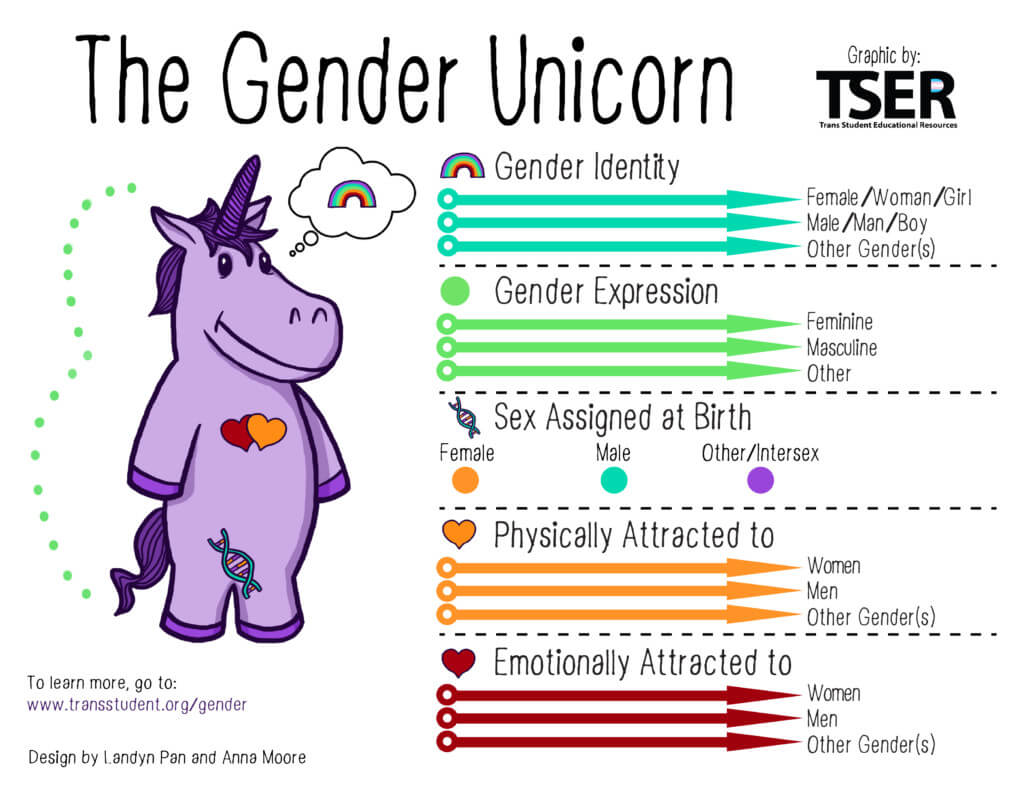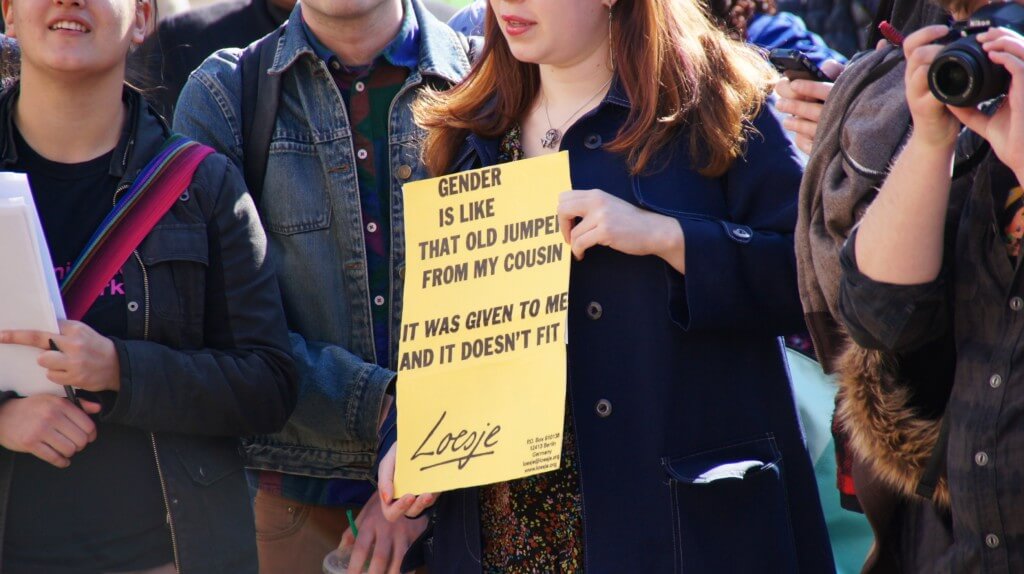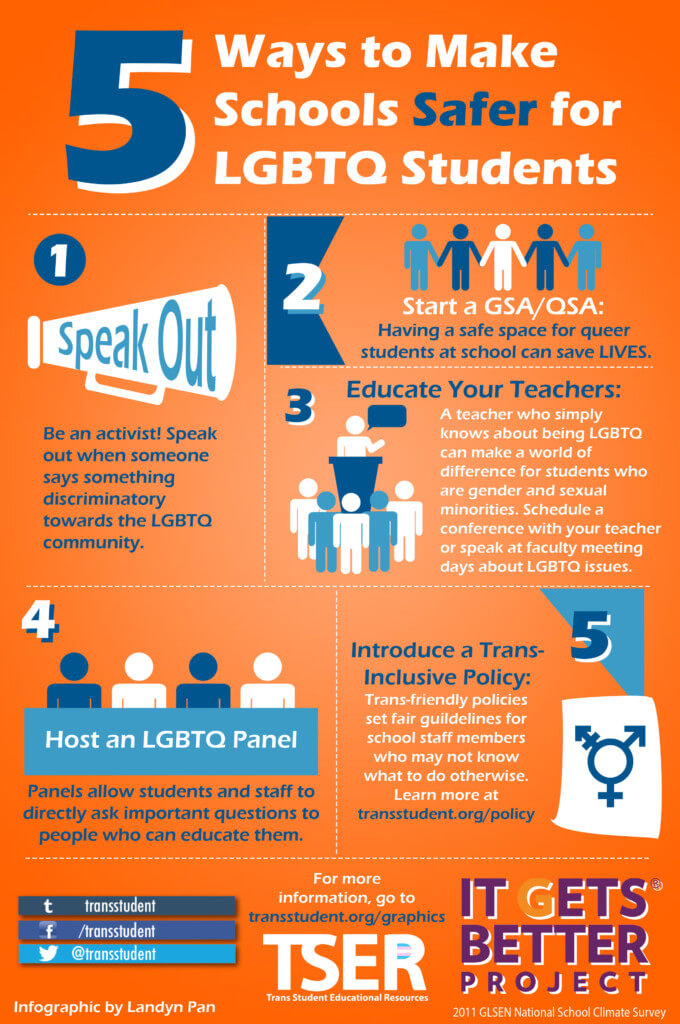Today’s campuses tend to embrace LGBTQ+ pride and acceptance openly, through different support groups, administrative actions or pride flags hung from dorm windows. College students and academic institutions have gotten a lot better about discussing sexuality and providing resources to students so they can learn about and get support for their identity. However, it seems all the attention of these initiatives goes to the L and G from the acronym (and occasionally B), leaving students who fall under the T or other terms often not listed out in the cold.
We’ve come a long way since the generations of our grandparents and even parents, where gender variance was not only entirely taboo but also almost basically nonexistent as a concept. Despite this, we only seem willing to acknowledge the problem, not actually discuss it. Now, more than ever, we need to focus on learning and understanding. We lie when we say we live in a “post-gender” society and actively ignore oppression that needs to be corrected by downplaying the relevance and impact of these issues.
What Does It Mean to be Gender Nonconforming?

Before you can understand gender nonconformity, you first need to have a working definition of gender and gender identity. A number of different components complicate the concept of gender, but ultimately, your gender dictates your characteristics and how you behave in society. You label yourself with a gender identity, the term best describes how you feel, think and act.
The (generally thought of) majority of people are considered cisgender—having a gender identity that aligns with their biological sex (i.e. a female who identifies as a girl). Alternatively, some people are transgender, or having a gender identity that does not align with their biological sex (i.e. a female who identifies as a boy).
Generally used as a catchall term, transgender has come to mean moving from one binary gender to the other. Gender nonconforming – sometimes called gender variance – is when a gender identity does not align with a biological sex and may not fit into standard masculine or feminine categories. “In the simplest of terms, [gender nonconformity] is behaviors, actions, expression and identities that subvert—or undermine—the construct of gender at a societal level,” said recent Hampshire College graduate Sarah Demarest, who majored in Women’s, Gender and Sexuality Studies.

These ideas make this a hard concept to comprehend. If you feel a little lost, don’t feel stress. Understanding gender nonconformity may seem difficult at first, but know that it’s even challenging for gender non-conforming people. “The easiest way to describe [gender non-conformity] is that it’s a feeling outside the gender binary. It’s not girl or boy or it’s both girl and boy at once depending on what a person says,” said Jason Myth, an American University sophomore who identifies as genderfluid.
Gender nonconformity seems difficult to talk about for two reasons. First, we are entering relatively new and unexplored territory by discussing this. Second, these ideas rely heavily on personal feelings and subjectivity. Gender identity is entirely dependent on a person’s feelings, so definitions may vary depending on who you talk to. Regardless, how someone identifies is how they are, and that should receive respect.
Similarly, how you identify remains up to you. You can’t just take a test to see if your gender nonconforming. Instead it’s really all about how you feel. If you ever think that maybe “girl” or “boy” doesn’t quite work for you, then do some research. Consider other identities and terms and see what feels right. Remember that no label is permanent and that it’s okay to explore your identity and try out different terms. But most of all, allow yourself to be open to and accepting of people of all different genders and gender identities. It’s challenging being outside of the “norm,” but having allies really helps.
“Being gender non-conforming has really opened my eyes to how binary the world is,” said Myth. “I first realized I was trans in seventh grade, where I said I was a trans man – which was true at the time. But over the years, my identity has changed and evolved and I have personally gone by a lot of labels until recently when I settled on genderfluid.”
Discovering the right label for yourself can take quite a while, and the process of figuring out your identity ultimately never ends. Some people do find a term that works well for them, and others may use one, even if it’s not “perfect” because it helps define them. “My gender is very fluid and switches all the time, so instead of trying to label every little change in how I feel it makes more sense to say genderfluid,” Myth said. Having a term that “fits” can make the process of self-discovery easier since there’s a way to really say how you feel. Still, others may not use labels, and that is perfectly valid, too. “Gender nonconformity is a unique experience that varies for each person experiencing it so it’s hard to define exactly,” Myth said.
However, even once someone has their identity “figured out,” or at least labeled, it doesn’t necessarily get easier. In fact, in many situations, it can and unfortunately may get worse. “One of the negatives that sometimes comes with being trans and genderfluid is the dysphoria. For a while, I had crushing dysphoria that affected every part of my life. Now, I have dysphoria that is a lot more manageable,” said Myth.
Gender dysphoria is defined by the American Psychiatric Association as, “a conflict between a person’s physical/assigned gender and the gender with which they identify.” It’s also a serious mental health concern. This dysphoria can cause significant emotional distress as well as present barriers to socializing and create major body image issues. Gender dysphoria tends to worsen in severity around the time of puberty. It can also become more severe during stressful times, especially those that impact identity formation, AKA college. Not all gender non-conforming individuals experience gender dysphoria, but for those that do (and even some of those that don’t) the combination of the generally uncomfortable-ness of college and being put into gender categories (particularly in dorm rooms) can compound these feelings.
What is it Like to be Gender Nonconforming in College?

Unfortunately, our society and college campuses are not that friendly to gender nonconforming students. “I think there’s this popular image of college campuses as liberal bastions, so then there’s the whole backlash against ‘oversensitive college students with their trigger warnings and made-up genders’ which is a huge obstacle to change,” said Demarest. We tend to think of colleges as way ahead of the game and accepting of all students. However, the truth is while the students are often very open-minded and receptive, you’ll still find many valid administrative barriers that can make this “welcome” feel a bit shortcoming.
The administration, policies and culture of college can often feel oppressive to these students. While the Common Application and most schools do ask for “preferred” (or “true”) names, most official forms use their “dead” names. For instance, many professors are pretty good about preferred names, yet not all use them. And unconscious (and conscious) transphobia and gendering (i.e. “Okay guys and girls…”) happen in classes all the time.
Beyond that, many gender nonconforming students, even those at “liberal” schools, share that even with preferred name options and gender-neutral bathrooms, there’s not enough being done. These ideas are merely add-ons to pre-existing conditions on campuses, but don’t tackle what is actually problematic, which is the policies that dictate “official names,” treatment in classes and housing.
Did you know gendered housing can often leave gender nonconforming students feeling very uncomfortable? They’re either assigned based on biological sex, or otherwise put in LGBTQ+ specific housing. That can serve as a good community, but can also feel ostracizing. “Basically, I wasn’t given the option to live in a single, so I ended up rooming with two other girls,” said Myth on the topic of gendered housing. They did use my preferred nickname, but didn’t use my preferred full name, and didn’t use my proper pronouns. I don’t think either one of them really knew my gender identity and we didn’t have any interest in talking about it or figuring it out. It was a really frustrating experience overall, even though my roommates weren’t ‘bad’ people; being misgendered all the time just gets grating.”
The issues don’t stop there, either; a 2017 fact sheet reports that nearly half of transgender individuals in the workforce were not hired or were fired because of their gender identity and that nine in 10 transgender employees experienced transphobia at work. In 30 states, employees can be fired for being transgender, and no federal law bans this sort of discrimination. These sentiments often trickle down into internships and job opportunities for students. While some companies may be very LGBT-friendly, others will reject applicants regardless of their gender presentation or, if they are trans, where they are in their transition (should they wish to do so).

Takeaway

Even though the idea of nonbinary identities arose during the genderqueer movement of the 90s, the concept of gender nonconformity is still new to many. There is a tendency to think of anyone who doesn’t conform to their assigned binary gender as “weird,” “sick” or even in some cases, “immoral.” However, gender nonconformity has existed (in one form or another) for as long as the concept of gender has existed. Gender nonconforming individuals often have to deal with the stigma, mistreatment and abuse that is associated with this lack of understanding, which can be very dangerous and even fatal at times.
Between systematic barriers, ingrained stereotypes and stigma towards the LGBTQ+ community, gender non-conforming students have a much heavier load to carry than just the general stress of college that their binary counterparts face. While we continue to move forward and change our ways, we can still do a lot to at least make sure that your gender doesn’t affect your education. Struggling with your identity is hard enough. You shouldn’t have to deal with it hurting your education. But if we work together to learn about and accept different identities, it won’t matter if you’re binary or not. It just matters that you’re human. You are valid no matter what your gender is.
Show your support and pride with what you wear
LGBT Outfitters Rainbow Hearts Tank Top: $24.99
Resources
9 Questions You Were Afraid to Ask
Trans Student Educational Resource
*Name changed to protect privacy




















